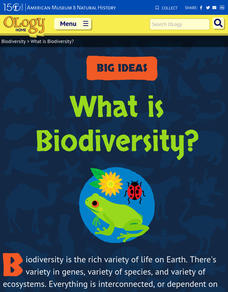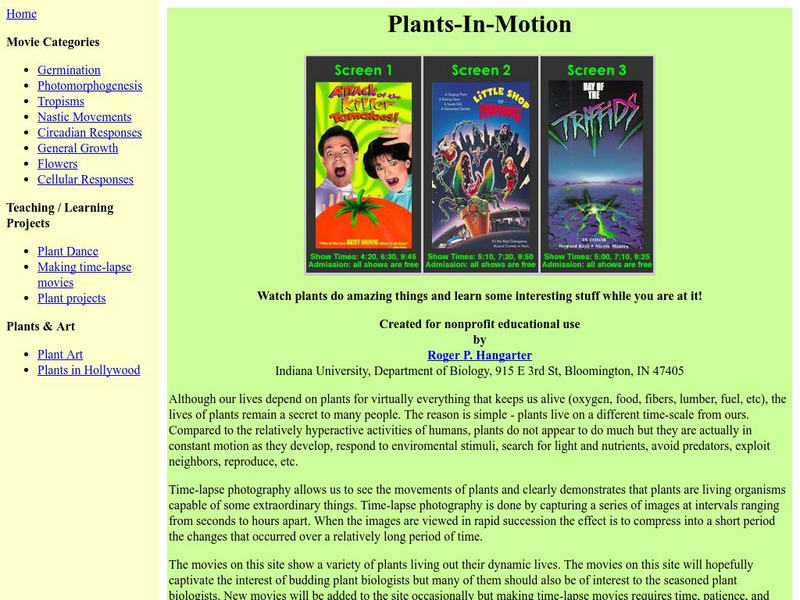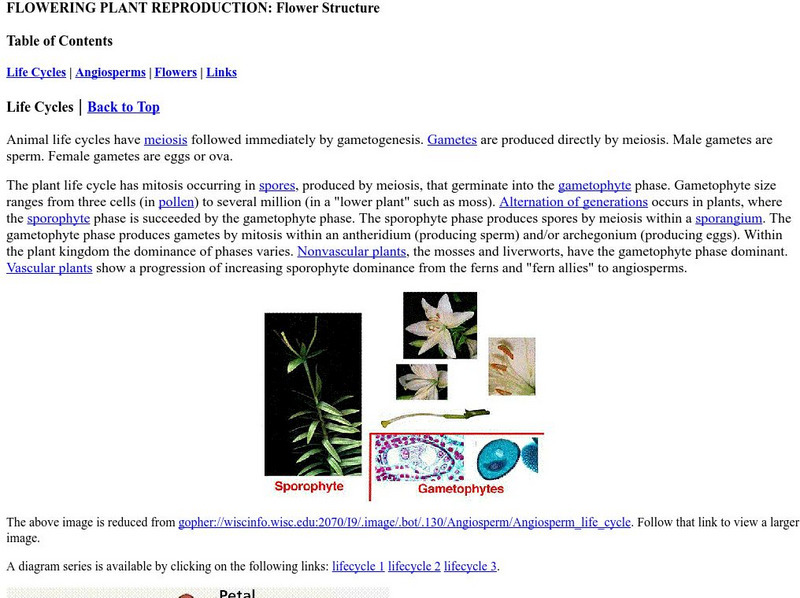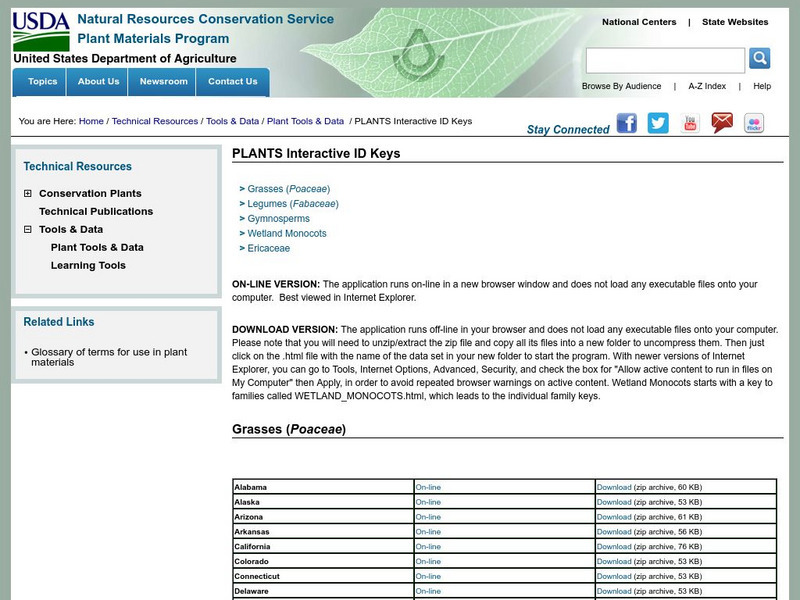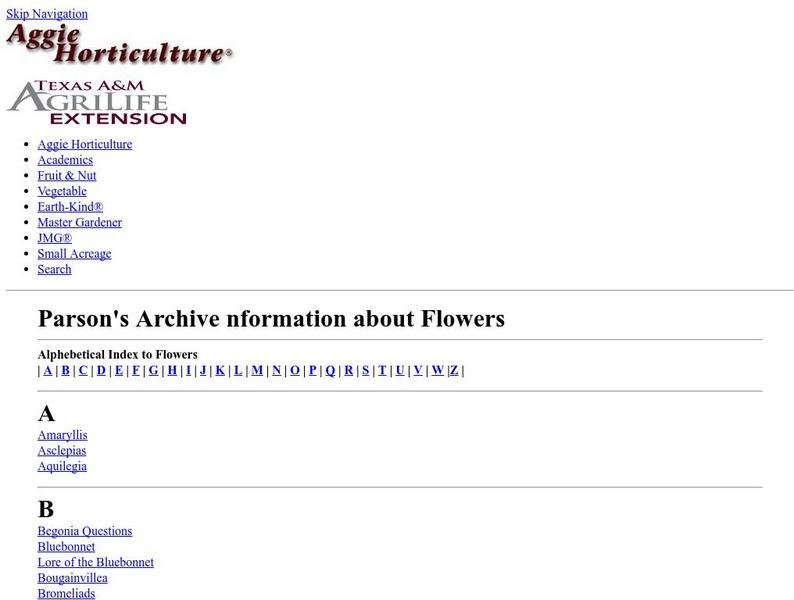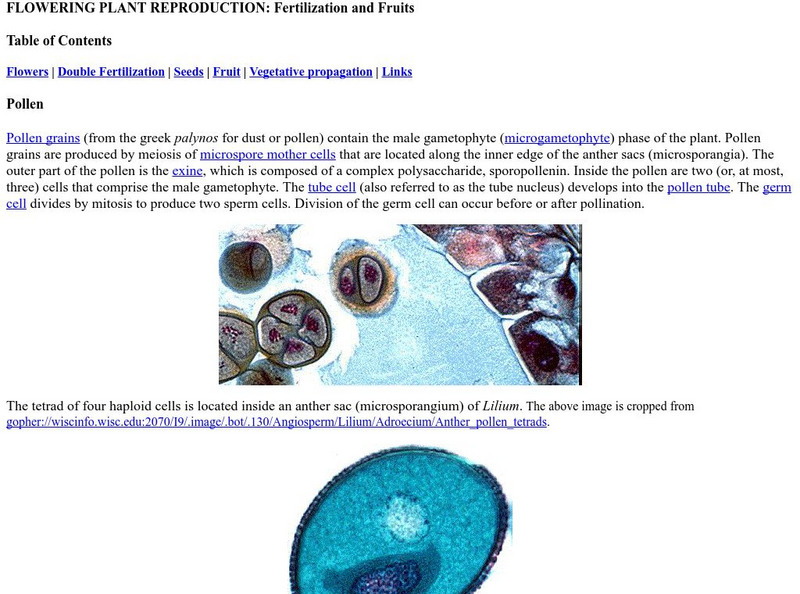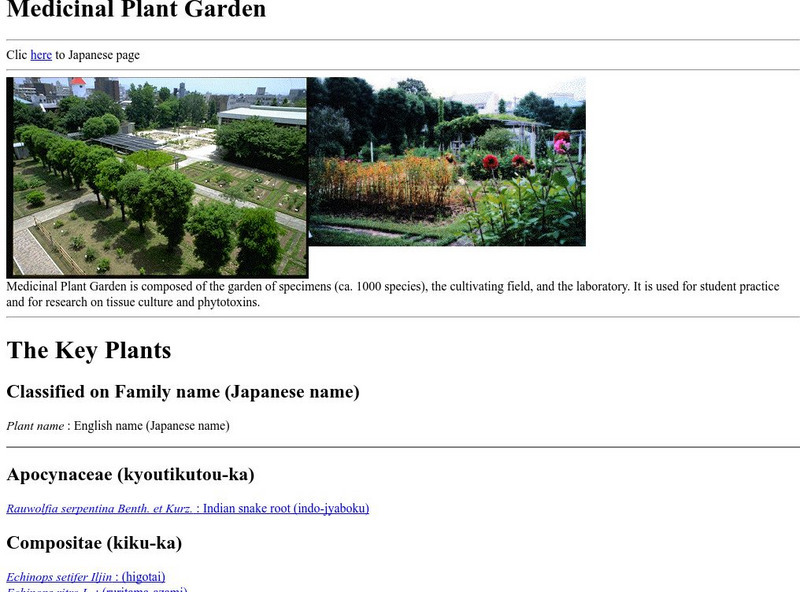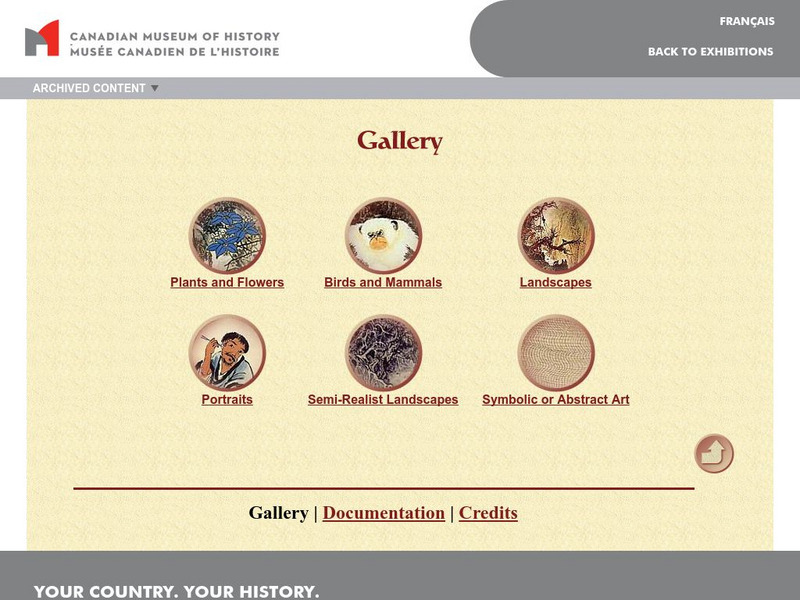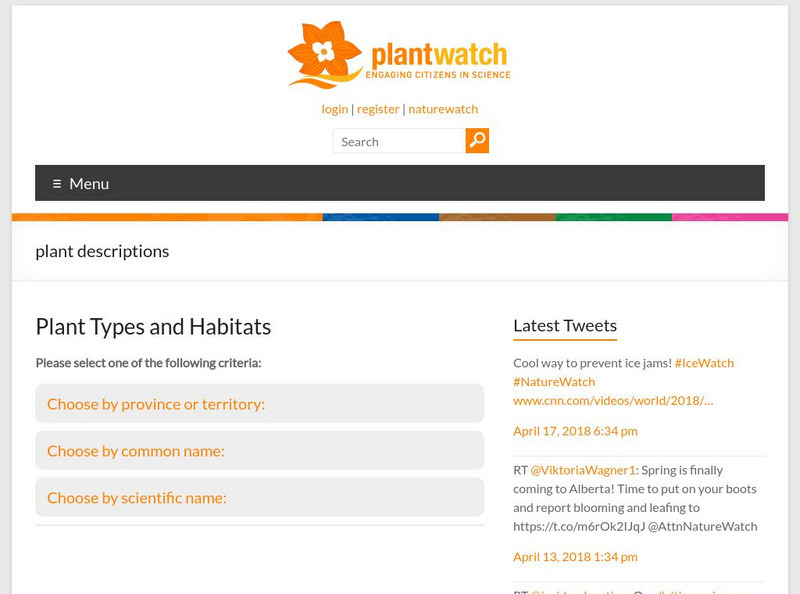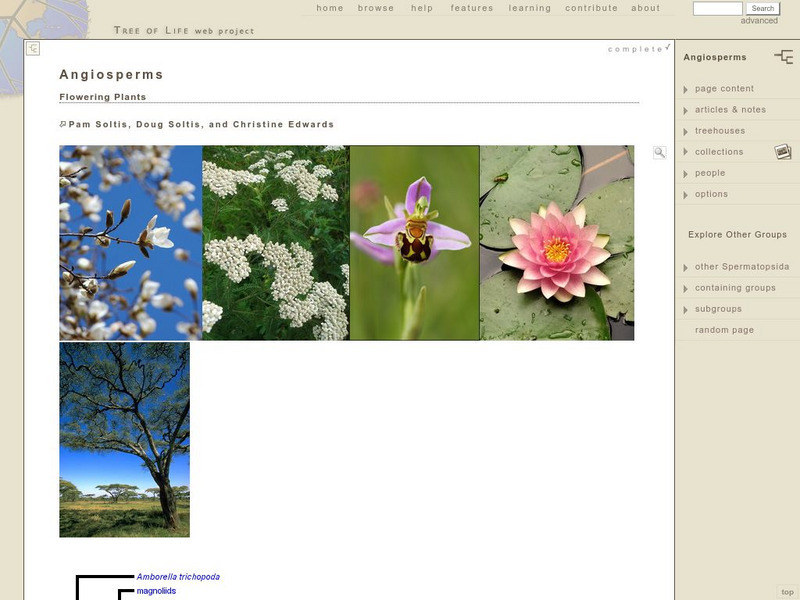American Museum of Natural History
What's This? Reproduction
Attracting the right mate is as important for humans as any other species. An interesting lesson teaches individuals about several strategies that animals and plants have adapted to attract their mates. From colorful nests to powerful...
American Museum of Natural History
What's This? Feeding
Some species have pretty creative methods for catching food. Young scientists learn about some interesting ways organisms get the nutrients they need by navigating an online interactive lesson that would be suitable for a remote learning...
American Museum of Natural History
The Tree of Life
Groups of species can have more in common than meets the eye. An interactive cladogram shows some of the connections between important groups of species. Learners click on sections of the diagram to learn more about the connections or on...
American Museum of Natural History
What is Biodiversity?
Not all dogs are the same just like not all finches are the same. An interactive online lesson helps individuals learn about the causes and limitations to biodiversity. The clickable sections describe the basics of the genetics of...
San Diego Zoo Global
San Diego Zoo: Flowers
Certain plants are known for their eye-catching blooms. Think of roses, orchids, carnations, and tulips. We often refer to these plants as "flowers." A flower, though, is just one part and quite an important part of a plant. Not all...
Indiana University
Indiana University: Plants in Motion
Plants grow and change on a time scale that is too slow for us to observe in real time. Time-lapse photography is a simple technique that allows us to see the movements of plants and clearly demonstrates that plants are living and...
Other
Parts of Plants
Each part of a plant has a very important function. All plants produce flowers for the same reason: to make seeds so another plant can grow.
Estrella Mountain Community College
Estrella Mountain Community College: Flower Structure
Site covers all aspects of plant reproduction such as life cycles, angiosperms and flowers. Provides links to other sites to aide in research.
Other
Flora of Europe: A Photographic Herbarium
This site from Flora of Europe gives a general description and photos for every type of vegetation found in Europe. It is very complete, but hard to navigate if you don't know the scientific name for the plant you're interested in.
Royal Collection Trust (UK)
Royal Collection: Artist's Illustrations of Plants in English Gardens
From the Royal Collection in London, this is a short biography and selection of floral illustrations that made up part of the 154 plate "Flower Book" by the gentelmen gardener Alexander Marshal (c.1620-1682).
US Department of Agriculture
Us Department of Agriculture: Plants Interactive Id Keys
A database of information about plants across the United States and how to identify them. Covers grasses, legumes, gymnosperms, wetland monocots, and the Ericaceae flowering plants. The information is contained in downloadable zip files,...
Idaho State University
Idaho Museum of Natural History: Guide to the Plants of Idaho State Arboretum
This resource describes the different plants of the Idaho State Arboretum in Pocatello. Users are provided with a picture and a description of every plant in the arboretum. You can click on the pictures for a larger view.
Texas A&M University
Texas a & M University: Information About Flowers
Site from the Texas A & M University provides an alphabetical index to flowers.
Ducksters
Ducksters: Biology for Kids: Flowering Plants
Kids learn about flowering plants in the science of biology including their life-cycle, structures of a flower, fruit, seeds, and pollination.
Ducksters
Ducksters: Biology for Kids: Non Flowering Plants
On this site, learn about the biology of non-flowering plants including gymnosperms, conifers, cones, seed, spores, ferns, and mosses.
Estrella Mountain Community College
Flowering Plant Reproduction: Fertilization and Fruits
Provides information and illustrations of the reproduction process in flowers. Learn more about flowers, double fertilization, seeds, fruit and vegetative propagation.
Other
The Charms of Duckweed (Smallest Flowering Plant)
Have a fun learning experience as you read about the smallest flowering plant. Botanical facts, pictures, projects, and practical uses of the Duckweed plant are all part of this site.
Virginia Tech
Virginia Tech Horticulture Garden
This site provides information on the Virginia Tech Horticulture Garden located in Blacksburg. If you click on the link "Photographs" you will see how two different gardens were constructed. Click on "What's Blooming" and get a beautiful...
Other
Kumamoto University: Medicinal Plant Garden
This site provides information on the Medicinal Plant Garden located in Japan. The web page presents a list of all the plants the garden contains, and their pictures.
Canadian Museum of History
Canadian Museum of History: Gallery
This article is easy to navigate for students of all ages. Provides examples of Chinese artwork: plants and flowers, birds, mammals, landscapes, portraits, semi-realist landscapes, symbolic art, and abstract art.
Other
Plant Watch: Plant Descriptions
The page, "Plant Descriptions," will lead you to detailed information on various plants that are native to a particular province. Just select the province you are most interested in, and a list of species native to that province will...
Tree of Life Project
Tre of Life Web Project: Angiosperms
Identify and understand what angiosperms are and their relationship in the evolutionary tree of flowering plants.
Canadian Museum of Nature
Canadian Museum of Nature: Native Plant Gardening
Plants native to Canada that would do well in small, ecologically friendly gardens are presented here. There are several plants each for ponds, meadows and woodlands. Each plant has a popup window with facts about it.
Estrella Mountain Community College
Estrella Mountain Community College: Plants and Their Structure Ii
Explore information about the structure of the plant with this page. Investigate the difference between monocots and dicots by comparing both descriptions and pictures. Also understand what produces secondary growth. Finally, look at the...
Other popular searches
- Edible Plants and Flowers
- Flowers and Plants
- Pre K Plants and Flowers
- Prek Plants and Flowers
- Plants and Flowers Art
- Perk Plants and Flowers
- Prue K Plants and Flowers
- Plants and Flowers Lessons
- Art Flowers Plants
- Identifying Plants and Flowers



